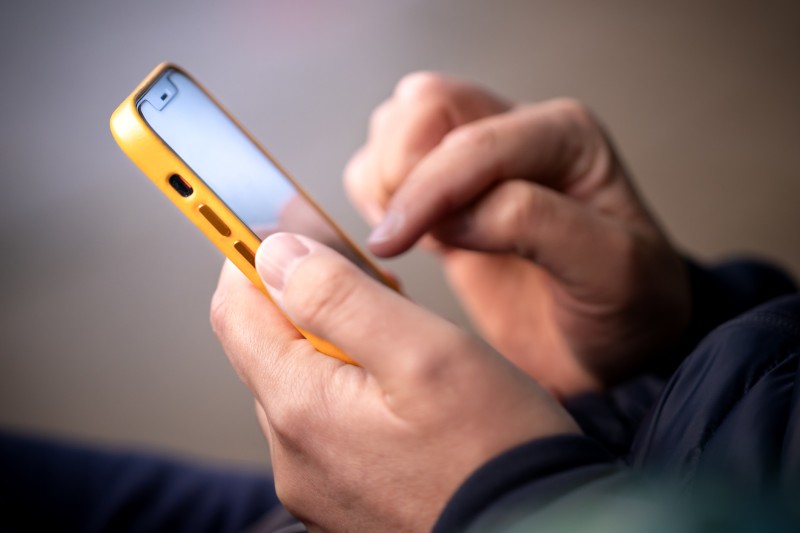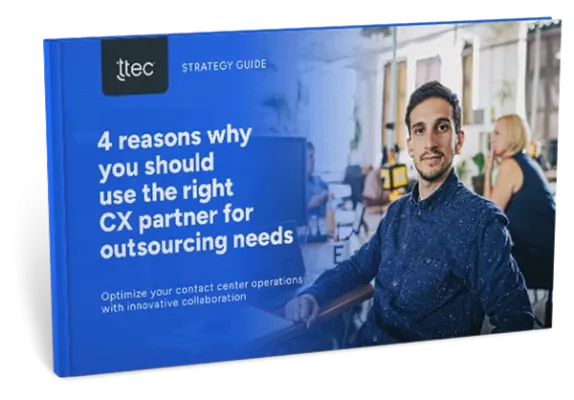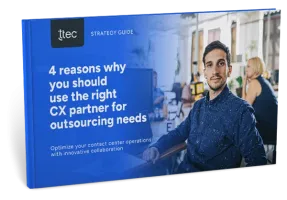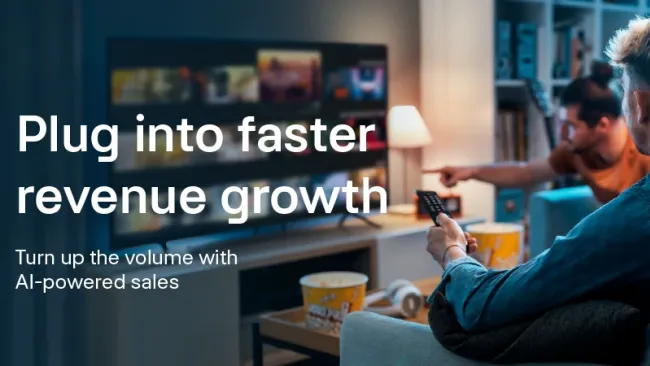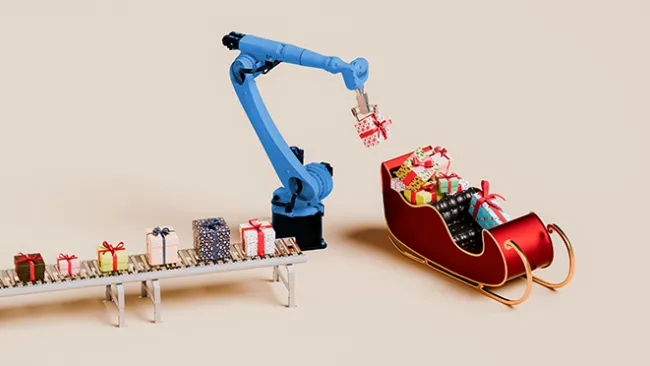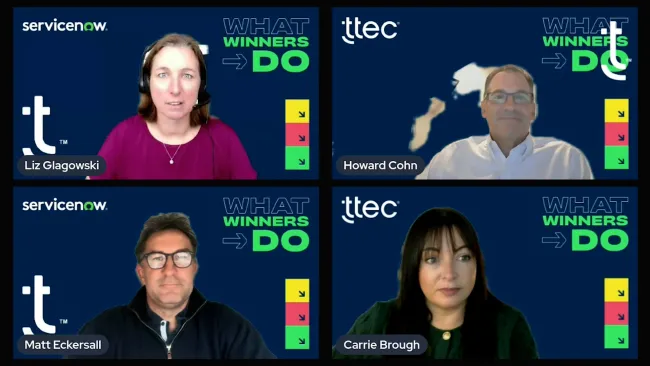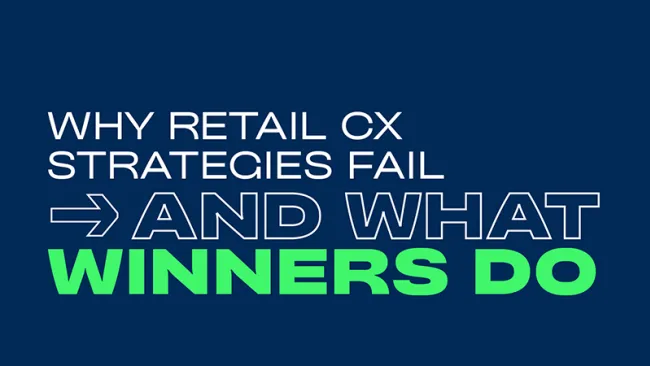SMS text messages have been the standard on smartphones for over 20 years. But 20 years in the tech world is a lifetime.
Enter RCS (Rich Communication Services) -- a new way to up the messaging game and deliver better experiences for your customers and for your business via mobile. In this episode of the CX Pod, Vibes Chief Innovation Officer Alex Campbell provides a primer for ways RCS can enhance mobile marketing and customer service with richer, more personal interactions.

TRANSCRIPT
Liz Glagowski: Hi, and welcome to the CX Pod. I'm Liz Glagowski of the Customer Strategist Journal. Today we'll be talking about something very near and dear to everyone: their phones. In particular how messaging is changing interactions on mobile phones for the better. We're all familiar with SMS text messages. It's been the standard on smartphones for over 20 years, but 20 years in the tech world is a lifetime.
Enter RCS, which is a new way to up the messaging game and deliver better experiences for your customers and for your business via mobile. So here to sort things out through all the acronyms and all the ins and outs of RCS get us up to mobile speed is Alex Campbell, co-founder and chief innovation officer at Vibes, a mobile intelligent platform company.
Welcome, Alex.

Alex Campbell: Thank you. I'm glad to be here.
LG: So glad to have you today. So why don't we start from the beginning before we get too deep into RCS? Maybe tell ell us a little bit about your company and then your role within it.
AC: Yeah. I mean, you say 20 years is a lifetime. I started vibes more than 20 years ago, so it has literally been my life that in my, my professional lifetime.
Yeah. So, so, I'm a co-founder at Vibes. We started, a long time ago. I mean, it's interesting that, you know, as, as messaging and all the acronyms, the technology changes. The core mission of what we're trying to do with messaging is still the same, like, no matter what. Technology you're on. So I go in a little bit about my background.
So I started the company, here in Chicago. And we've always had this vision of you have mobile on one side, and then you have marketing on the other side. They're going to connect. But we always knew that it was going to be different. You know, like advertising and kind of that traditional marketing, you know, has always been centered around “how do I almost interrupt your day and get you to see something and get you to know about something?”
You know, I think with mobile, it's just so different. With mobile it has to be. You know, I always say your mobile phone is a mission driven device. And when you do experience bad mobile marketing, it usually gets in the way of your mission rather than helps your mission.
So the example I uses, you know, you go to ESPN to check a sports score and there's always that like 12 second takeover ad. It's usually a car and it's preventing you from seeing the score. Like that's bad because that's where you get frustrated if the marketing can actually help you. And help you figure something out on your phone, that's good marketing. So, you know, and I go back to kind of the original idea of the technologies might change, but that's always the same.
And it's very critical for mobile.
LG: So as the companies evolve, talk a little bit about how important messaging is for brands, in terms of connecting with customers. And then maybe talk about a little bit about what RCS is and how that plays a role.
AC: Yeah. So, with messaging and brands and so to advise we work with very, very large companies. The Ralph Laurens, Children's Place, Kohl's. So, so big enterprises. Those brands want to and need to maintain a relationship with their customers on a 1 to 1 level. And so this is where messaging comes in.
So, you know, messaging allows a brand to cut through the clutter of all the other stuff that we as consumers see every day and actually have that communication and relationship with the end user. That's what messaging is really good at.
There are other channels within mobile, even within mobile itself, where I can do a mobile app. I can do a mobile website. But if I need to get you information right now as a consumer, like messaging is the only way to do that.
You know, email has used to be very good at that, and now it's kind of fallen off. I think I saw my first I heard of my first single digit open rate, which is just it's just that that media has been just with, with a lot of stuff and spam.
And I mean, I think in my email inbox right now, literally, I have 2,532 unread emails. All right. So, if you're a brand and you want to talk to your customer, messaging is the way to do that. And it's actually it's been a very good media, our channel I'd say because it's been protected.
You don't you do see some spam and you see some, you know, text messages that are, you know, the, the toll collectors stuff, like, yeah, I'm getting those a lot. Yeah, you get those. But like compared to email it's, it's a mean, it's a very clean, you know channel.
I would credit the, the mobile carriers for actually doing that. They've kept it clean. They've made sure that you don't get spam. And, and that's a good thing.
And that's a great thing for marketers because it's when I get a text message, I read it. And so you're going to the evolution of where messaging started. I mean, I don't know if you remember back to the triple tap days, without the smartphones.
Now it evolved as SMS evolved memes evolve where you can actually send pictures. And now we have RCS. So RCS is the protocol itself is not new. It's been around almost a decade now. But what changed last year was Apple announced that they were going to support RCS.
So it used to be that on Android you could send an RCS message, but you couldn't send one to an iOS device. For a big brand, that doesn't help, right? I don't want to send a message to half of my audience. And so now the fact that Apple has opened up and within iOS, it's actually supported.
Now, when I send an RCS message, you can go to everyone. So that was the first hurdle.
What RCS is, it's got rich communication services. So the way I like to describe it is, it gives you more functionality in that message than you had before. And, you know, iOS users, Apple users will know when you went from text messaging to iMessage.
That's a similar change that we see now with brands who can send a message, with high resolution images, videos, you can get tap backs. I can see when someone's reading my message, and responding, I can see that it was delivered. So adds a lot more functionality for brands, to communicate with the end user.
So as I'm an Apple user, so, you know, seeing that delivered message, seeing those bubbles. So this is now a way for companies to be able to see that on anybody or anything that they're sending there. Yeah. So when you are now interacting with a brand you will see, that it was delivered.
You will see the little bubbles like the other ellipses, which is really interesting because that actually creates a little social dynamic. And this is something that we had to think about, as a marketing platform is, you know, if you're the consumer and you send a message to a brand and you see that the brand has read your message like if they don't respond like, that's not good, right?
Any teenager will tell you. I mean, I get yelled at by my teenage daughters all the time that you left me unread because the ultimate offense. And yet brands do this all the time, right? So yeah, it's really interesting that now you have that visibility you like as a brand. You have to think about that.
And then as this new kind of social dynamic to messaging.
LG: It becomes more personal and intimate when you can see if they're reading it. But it does add more urgency on the part of the brand to react and respond, not just blast out something and then do nothing.
Since this is a CX podcast, I'm curious about how it's elevating that customer experience on the customer side and on the brand side. What are some ways that brands are starting to use it to connect with their customers more deeply?
AC: We're in the early days of launching RCS. And so right now what we're seeing is, I mean, we have about 100 different agents, our sales agents. So those are, those are brands that are using this so far. And really to date, it's been more around what is its focus, more on the visuals, like what visuals can I provide?
Within RCS there's a button as opposed to a link. You can actually now make it a button. Now, it's interesting that one of our first learnings was, you know, as we tested, we would send an RCS message with a button, with a button and a link, and then just the link and people didn't know to hit the button.
So we had a much lower click through rate on just the button. But it's clearly just because people have no it, they've never seen this before. So they don't know that they can actually click a button within a text message. They're thinking of the flat image or the button is just there. Yeah. So that that was something that surprised us because we thought, oh, button, everybody is just going to click the button.
There's going to be some time where people need to figure out that they actually can click that. So there is a little bit of a learning curve with the consumer right now because they've never seen this before.
Going back to your question, you know, right now, we're encouraging our customers to test and test and figure out what are those use cases where RCS does a much better job than SMS, where it's kind of the same, and maybe where there isn't as much value.
I've been doing this, you know, over 20 years now, and I'm always surprised about some of the things that I never thought would work that actually work. I think that there are things I thought would work well, the don't. So our philosophy with our customers has been: test until you're satisfied you found some use cases that really work well here.
So that's the stage we're in right now. I think in the next year, RCS is way more interactive. We talked about the read receipts and seeing someone got the message. You'll be able to go back and forth a lot more within the messaging itself. And what I'm most excited about is you can actually add functionality to messages.
I think most people have gotten a message saying, hey, you left something in your cart, do you want it? And here's a little link to click. I can send you a picture of that with a button that says buy now. So going back to the whole mission idea -- I think everyone's done something where they left something in their cart and they've gotten way distracted on something else and totally forgotten about it.
But if I now get a message saying, “hey, do you like you want this? Click here to buy” -- that actually helps me as the consumer because it's so much easier. I don't have to go through all these links and go back into my cart and all that. And so that's where I think RCS will really help is:
- Your appointment, your car's ready
- You have a reservation coming up. Do you want to change it?
A lot of that can now happen within the message itself, rather than having to take you to an app or to a mobile web page. Keep it instead of bouncing around different channels, you know, living in one and then creating less friction for that customer, which is always what brands are trying to do to have them complete the task.
It's just so much easier for the consumer because they don't have to download your app in order to get the ability to buy something. I mean, yes, we want everyone to download our app, but you know, if you know is a big company, you know, big brand, if you're lucky, you get 10 to 15% of your customers to download your app and half of them to actually use it. So like, what about the other 85%? What RCS can do is provide a lot of the app like functionality in messaging, which everybody already has.
LG: What about some of the new data and analytics and insight that might be available with the as compared to some of the older tools?
AC: The biggest thing right now are those read receipts. Right. So knowing that I send out a message and X number of people actually read it and then figure out when they read it.
We always say that timing is really important for messaging. If you have a message that you need to get to your consumers right now, messaging is the only way to do that. If I email you something, you may look at it, you know, whenever you look at it.
There's some urgency around messaging. And so what we're encouraging our customers to think through is -- if you send a message and people don't read it for a while, like, maybe you could have sent that as an email. Or, are you are you thinking about your content in a way that really fits with messaging and are you starting to see some of the analytics around it?
Like maybe someone read it and then they didn't click it until 30 minutes later. That may show that you didn't really have a compelling message. What you want to see is someone you send a message, people open it and they click it right away. And that's what we're kind of shooting for.
We have a mantra ideal of the perfect send, which is no opt outs, and everybody clicks it.
That's kind of aspirational. We want to get there. That's where we want to get you.
That's how you should be thinking about this, because anytime you send a text message, text messaging is expensive. It's not an email. And so when you send a message that someone doesn't click on or doesn't open, that's just wasted money.
LG: How is this playing with some of your customers that are more focused on maybe younger consumers versus older consumers?
AC: It's funny because messaging used to be that way, where it was always like, you know, oh, you got like kids are doing that. So you got to think about kids first. But it's everywhere. My mom is using messaging and it and honestly like for someone like her, RCS should help make it easier.
It should make it easier so that you don't have to see a message with a random link in it that has these characters in it. It's now just a button or two or I can do a carousel right where I can show many different things at once. And I can swipe through it.
What RCS should do is make it easier for everybody. It used to be that the kids will figure out how to use this and how to do it. And we had to kind of dumb it down for like the older generation, I mean older, which I'm definitely in. Now we can make it very simple and easy to use.
Brands that want to get into the yes, it's like, don't fall into the trap of like, ooh, there's this huge technology and look at all the things I can do and bells and whistles and I can do tap backs and I can do all these crazy things like make it simple, like make it easier for the consumer.
Think about when you're sending someone a text, what do you want them to do? Make it as easy as possible for them to do that. So it's as you know, even though we're talking about technology, it's really about how the technology is helping the actual interaction be better. The not just the bells and whistles of the technology.
Like that the example I use for the abandoned cart. The mission there is you have a consumer who is about to buy something and actually probably wanted to buy it but got distracted. So the mission is like, how do you help them complete the transaction, which they wanted to do, make it easy for them?
Think about an offer. A good basic 10% off offer. I send you an offer, the 10% off. I want to make it as easy as possible for you to use that. Because if you get that and you forget about it and then you like in the time you know it goes away and like it expires, it's like, oh, that that sucks from a consumer standpoint.
So the message itself has the functionality in it. I want to use that. I mean, we use a lot of mobile wallet, where I can send you a 10% offer and then you can just download it right to your phone and totally forget about it. And then the wallet actually reminds you on Friday that, hey, this is about to expire.
That's a great use of it that is all marketing, right there. But like I give you an offer and I helped you use it. Right. And that I think is a good experience for consumer. So you you mentioned that apples now open this up to their users. Where are we in terms of adoption? You said a lot of, a lot of brands are testing right now.
LG: Where are we in terms of adoption, and then where are we going to be?
AC: Propagation, which is basically like when, when a new iOS comes out, it actually takes a while for people to actually to update. It's, it's a lot longer than you think. But we're now up to about 80, I think 86%. So we can actually go and look at our databases and ping it again and find out who is RCS capable.
So right now we're seeing about 85-86%. So we're definitely at that point where people have enough people have RCS access. Now the question becomes, all right when I send them, when I send someone my first their first RCS message, they may have never seen something like this before.
Right. And so and it's and so RCS come doesn't come from like a six digit or five digit shortcode or a phone number. It comes from an actual brand. It comes from a logo. And from a trust standpoint, if I get a message that has my bank logo, I trust that a little more.
And it has to be vetted and it'll say verified by either your carrier or by Google or whoever. So, you know, you can actually trust that message. I mean, think go back to the whole, you know, the tolls, right? Yeah. Like you're getting a message from a toll. I mean, I literally actually just got one as we were talking from a number in England.
I don't trust that. But if you came from an actual brand that's verified by Verizon or Google, like, okay, maybe I'll trust that a little more. So that's going to help. That's going to help the consumer experience know that, okay. I can actually trust this message.
LG: As brands start to experiment with this and start to use it more, what are some challenges or things to really think about that maybe you're seeing so far with testing that you can offer some advice for others?
AC: A lot of people want to jump in with this great use case that has carousels and menus and all these things because you can. But right now we've learned that the consumers don't know they can click a button. Right. So we have to take baby steps and gradually introduce these features.
I mean we have I mean of course we have all these great interactive demos that do all sorts of fun things. But I always coach our customers on is let's remember, let's talk about basics.
What are we trying to do here? What is the mission? Don't over complicate just because you can and really think of the consumer first. When they get this message, I mean we always talk about like timing, right? Like, you know, you and I are recording this right now. I'm not going to pay attention to the messages I get.
Think of where the person is. Are they at lunch? Are they, like, on the car? Are they having a busy day? It was really interesting that one of our customers, used to send messages at 10 a.m. because someone once came up with the idea that 10 a.m. is the time to send. It's not based on anything. So we introduced AI into our sending. I kept telling our customers don't send it in the morning, send it in the evening. And one of our customers was like they were. They were so adamant that 10 a.m. was the time we were like, let's just try it.
And they found that they would send a message at 7 p.m. and they got, I think it was like 26 or 27% increase in response rate. And it just happened.
My point there is there are some fundamentals to think through and always think through. Like when you're sending a message. If you are you know, Chipotle and you want to get a message out at 11:30 a.m. for lunch, that matters.
And messaging is a great way to do that. But I always think through, when is the appropriate time to send, what is the content? What are people going to react to when they get that message? And if you send this RCS message yes, it looks great. Carousels, videos, all this like people might right now be a little caught off guard.
Our advice is always balance that interactivity and the technology with simplicity. And then gradually get out there with more and more use cases that make sense to your customer.
LG: We've talked a lot about using it in the consumer world in a purchase or a marketing context. Do you see any applications for this on a B2B side, or in a customer service organization where brands interacting with customers to fix a problem or something?
AC: Customer service will absolutely use RCS. You know, this interactivity? You know, we work with insurance companies that do the, you know, if your car breaks down, you can actually chat with someone.
Text messaging was good at that. RCS is so much better at that because it remembers things like, you can actually have that conversation. And interactivity between that. So, so yes, those use cases will hands down be better with RCS. You know, I think, but it doesn't have to be that. Right? I mean, you can still do the broadcasts of like, hey, 10% off offer this weekend.
You know, and so yeah, the interactivity piece I'm really excited about, you but again, I go back to let's just use that example. My car has died. I'm on the side of road, I text in to my insurance company and try and get a tow truck. And I see that my insurance company has read my message and they're not responding. That might get frustrating.
You need to make sure you're ready to respond or else, you want to make sure that your customers are feeling supported with text. And then you get a little more lenient of like, you know, oh, I sent the message and somebody reading it somewhere, but like you see someone typing back and you like and also the little dots go away.
If you imagine you're on your first date, you text someone afterwards, you see them responding, and then they go away like that's just like, right. Yeah, yeah. So like, you know, from a brand, you have to think about that.
There is a social aspect to messaging. And I think the brands that do it well, they know that.
LG: What are you most excited about when it comes to using RCS? Is it going to transform the industry?
AC: It definitely will transform the industry. We all talk about triple tapping and text messaging on non smartphone. How crazy that was. Like we're going to do the same thing in five years.
We're sitting there trying to think of what is a use case that will stay on SMS, and we couldn't really come up with one because RCS is just better at everything.
It's a little bit more expensive. So maybe in an instance where that really matters or it's a low margin kind of a message. But to me I would say, why are you sending that as text? Right. If the information is so important that your customer needs to see it right now, you should be willing to pay for that. Or just send an email.
I think everything will go RCS, just from the trust factor alone of now, I can actually trust that a message is what it says it is. And so in the end, I think as we start to roll out more interactive use cases with more media and more high res pictures, that's going to evolve pretty quickly.
In the end, I think it's going to be good for the consumer. Because if everything shifts RCS, you shouldn't get the total scams anymore because there's a vetting process. I think at some point you'll get to the point where a message comes in via RCS, and a message comes in via SMS and you're like, I'm kind of skeptical of the SMS part.
I think that's how it will evolve, over the next kind of five years or so.
LG: Yeah. Wow. I'm really looking forward to it. And I'm sure most people are as well, as, as mobile phone use just continues to rise. So. Yeah. Alex, thank you so much for sharing all this insight with us today and informing our audience. It's a great topic. And, good luck as the as the RCS technology continues to grow.
AC: Thank you so much for having me. It's been great. Thanks.
